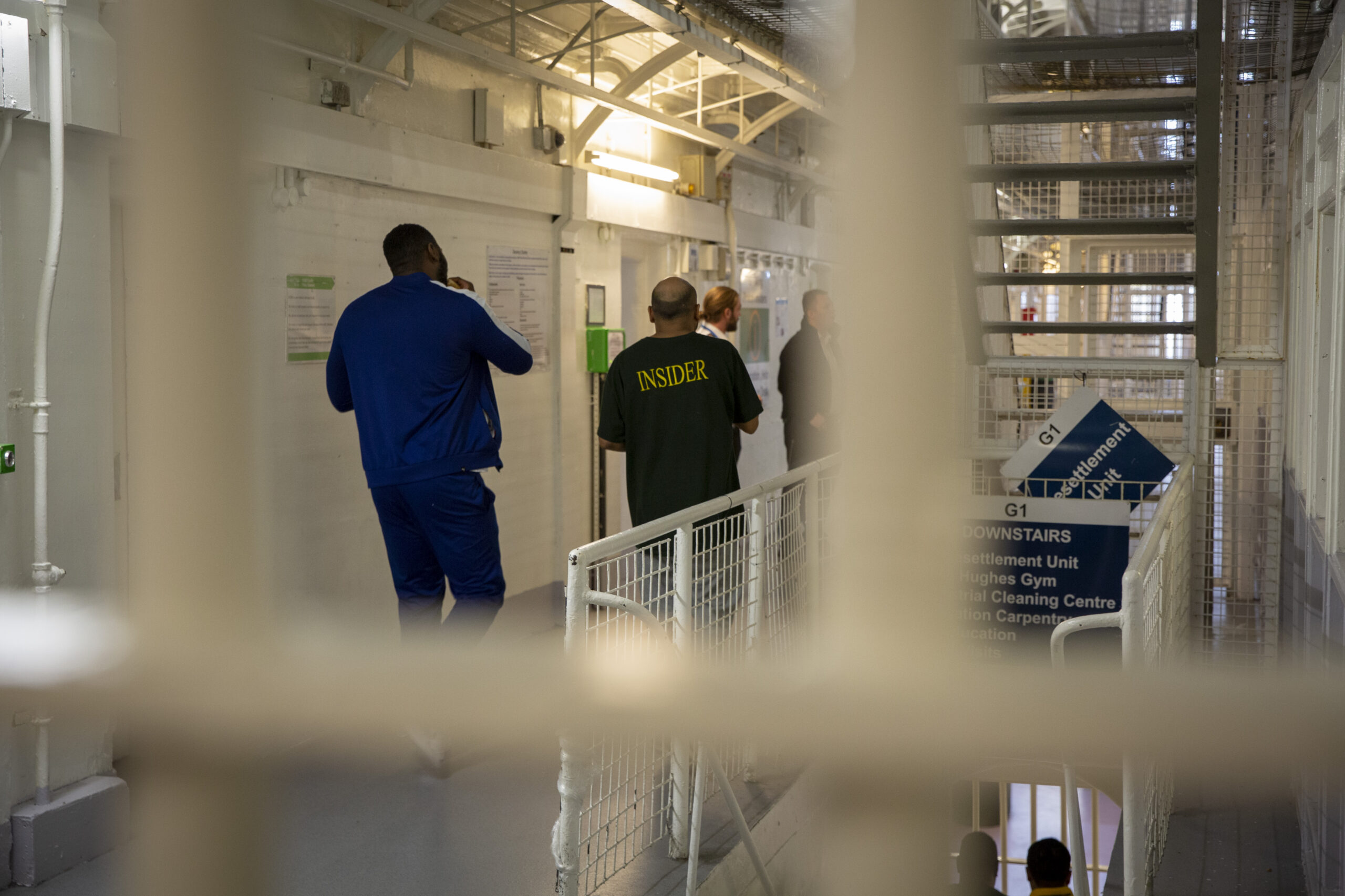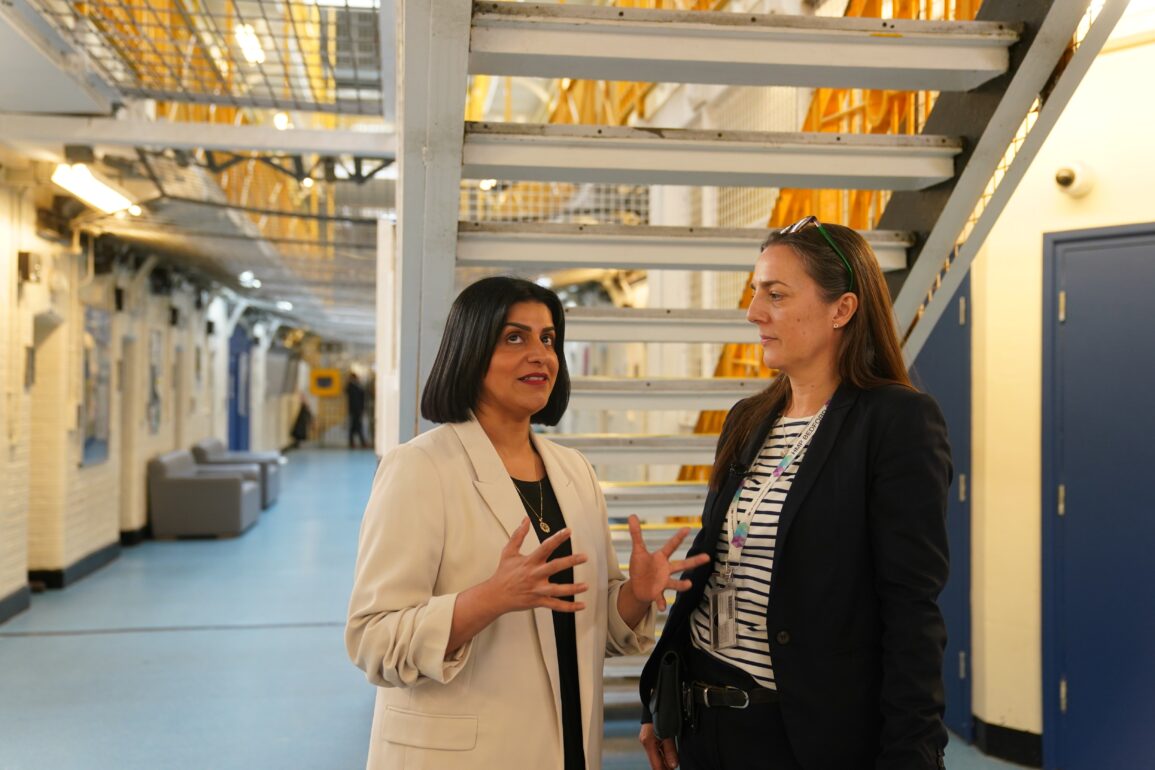Artificial intelligence could be used to predict when prisoners are about to turn violent or take their own lives, under plans being considered to use the technology inside jails to tackle soaring levels of violence and self-harm.
Shabana Mahmood, the justice secretary, said she had been briefed on how AI was used in other countries to monitor offender behaviour inside prisons.
She told The Times Crime and Justice Commission that she was “very interested” in emerging technology that combines footage from CCTV cameras with AI to predict behaviour. She said it could be used in Britain to “get ahead of potential violent incidents” and to help prison governors run “more effective, less violent regimes”.

Shabana Mahmood visited HMP Bedford in July, meeting the governor, Sarah Bott
JOE GIDDENS/PA
The technology Mahmood is particularly interested in deploying in prisons involves AI software analysing CCTV footage of inmates’ behaviour to predict their next move.
Ministry of Justice figures published last month revealed violence and self-harm had reached record levels, with 76,365 incidents of self-harm recorded in the 12 months to June and the number of assaults by prisoners soaring by a quarter to 29,254 over the same period.
Advertisement
A sentencing review, ordered by Mahmood and carried out by David Gauke, the former Conservative justice secretary, has been tasked with examining how AI has been used to monitor and predict offender behaviour in countries including Hong Kong, the United States, Singapore and the Netherlands.
Mahmood has been briefed on how prisons in Hong Kong have used AI-powered cameras that detect suspicious behaviour among large numbers of inmates, including self-harm and fighting. Correctional services there have deployed a video analytics system, developed by a tech start-up, to compare and analyse suspicious patterns of behaviour via camera images automatically, without human involvement. For example, it will detect abnormal gatherings of inmates or if a prisoner is standing next to windows with a rope, or hitting their head against a wall. The system will then alert prison officers, enabling them to make a physical intervention before harm or violence occurs.

David Gauke, who is carrying out the sentencing review, was a Tory MP from 2005 to 2019
DANIEL LEAL/AFP/GETTY IMAGES
Singapore’s prison service, meanwhile, deploys a software system called Avatar that uses video analytics backed up by an algorithm to detect high-intensity or erratic motions of inmates, potentially signalling when trouble is looming. The software sounds an alarm, allowing prison officers to attend the scene before violence breaks out.
Mahmood is also understood to be examining predictive policing software deployed in the Netherlands that predicts whether certain individuals are likely to commit criminal offences. It has caused controversy with civil liberty groups including Amnesty International, which have criticised the mathematical models it uses for being discriminatory towards certain nationalities and ethnicities.
However, Mahmood is said to be interested in how predictive behaviour technology could be used to monitor offenders released from prison who are deemed the most likely to be recalled to prison. Officials are examining how the technology might be able to give probation officers an indication of whether offenders are likely to reoffend or breach licensing conditions that would lead to their recall.
Advertisement

The system would detect unusual gatherings of inmates or erratic motions
ANDREW AITCHISON/IN PICTURES/GETTY IMAGES
Mahmood told the Times commission: “We’re very interested in greater use of technology in two ways, primarily: one, whether there’s scope to use more technology within our current prison system, inside prisons, in order to run more effective regimes, to support more rehabilitative work, to clamp down on violence … and then, secondly, outside of prison. I’m very clear [that] any changes we make in the future as a result of the review … have to maintain public confidence in the criminal justice system.”
She added: “Some jurisdictions are moving to using AI a lot more in their prison management as well as outside of prison management systems and I’m very interested in what that might look like for us.”
Explaining how AI could benefit offender management inside prisons, Mahmood said: “I’ve been briefed that some technology can monitor gait, the way someone is standing, their demeanour, in order to predict and get ahead of incidents of violence, which has been of use to prison officers as they try to run more effective, less violent regimes.
“There is some emerging technology that is about greater use of CCTV and AI in order to get ahead of potential violent incidents. It might sound a bit Minority Report-esque, potentially, but I think these are areas that are emerging that we should be interested in and which I’d like the review to look into more closely for us. Not everything that happens in other jurisdictions can easily translate to what we do here.”
This post was originally published on this site be sure to check out more of their content.









